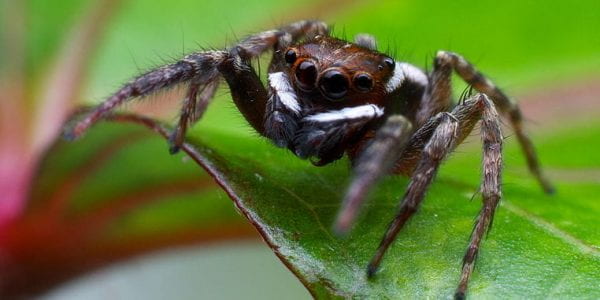Our urban environment is filled with noises from construction work, vehicles, music, voices, movement etc. I honestly hate noise pollution and noisy places in general. It is impossible to wake up late when my neighbours are doing renovation work, and when the nearby primary school children are having their recess. And difficult to enjoy my music when the MRT train travels through the underground tracks from Bishan towards Marina Bay. Enjoying the peace and tranquility of a park, only to have it taken from me when a group of rowdy people come anywhere near is another level of annoyance too. However, this is all that noise pollution is to us, an annoyance. It usually cannot do any significant damage. If they can, we are given warnings and have ways to prevent them.

For example, mobile phones have a bar that represents the volume in percentage, and when headphones are used, that bar is red from approximately 65%, indicating that music from 65% onwards can be harmful.
Animals do not get the same kind of luxuries as we do. There aren’t any warnings or preventive measures from noise pollution, and it has been shown to clearly affect aquatic animals such as dolphins (Dey et al., 2019), prawns (Filiciotto et al., 2016), and fish (Wysocki et al., 2006) just to name a few. Stressing the animals, disrupting echo location and changing their behaviour. This might come as a surprise to some, but noise pollution affects arachnids too. It might be obvious for insects to be affected as there are crickets and cicadas that are notoriously noisy and are the most heard insects in parks (based on experience), but spiders can also hear! They “listen” to vibrations in the ground and webbing with their legs, and also have special hairs on a leg segment that are sensitive to vibrations in the air (Shamble et al., 2016).
Spiders are also negatively affected by sound. Orb weaver spiders have a tougher time detecting their prey that is trapped in the web (Wu & Elias, 2014), while wolf spiders become stressed and behave differently at certain frequencies which reduces their chance of successfully mating (Gordon, 2010), and from the video above, jumping spiders might use sound to evade predatory wasps. Many families of spiders do not have good eyesight and rely on their legs and hairs to detect vibrations made by prey and mates. It could be an atomistic fallacy, but I believe all spiders with similar habits and environments will suffer with similar effects which could slowly, but surely, dwindle their fitness and population. It was also noticed that there is a negative correlation between the number of spiders and a noise source (Bunkley et al., 2017).

A Nephila maculata with legs resting on non-sticky radial threads of her web, waiting for prey to struggle so she can sense the vibrations
Solutions to reduce noise in the environment? It seems (unsurprisingly) that there are more ideas and measures for reducing noise pollution impacts to us people than animals. Understandably, it is impossible to remove sound entirely from a system but if perhaps more attention and care were given to those more affected, their situation could improve.
references
Bunkley, J. P., McClure, C. J. W., Kawahara, A. Y., Francis, C. D., & Barber, J. R. (2017). Anthropogenic noise changes arthropod abundances. Ecology and evolution, 7(9), 2977-2985. https://doi.org/10.1002/ece3.2698
Dey, M., Krishnaswamy, J., Morisaka, T., & Kelkar, N. (2019). Interacting effects of vessel noise and shallow river depth elevate metabolic stress in Ganges river dolphins. Scientific reports, 9(1), 15426-15413. https://doi.org/10.1038/s41598-019-51664-1
Filiciotto, F., Vazzana, M., Celi, M., Maccarrone, V., Ceraulo, M., Buffa, G., Arizza, V., de Vincenzi, G., Grammauta, R., Mazzola, S., & Buscaino, G. (2016). Underwater noise from boats: Measurement of its influence on the behaviour and biochemistry of the common prawn ( Palaemon serratus , Pennant 1777). Journal of experimental marine biology and ecology, 478, 24-33. https://doi.org/10.1016/j.jembe.2016.01.014
Gordon, S. D. (2010). Environmental interference and seismic communication in wolf spiders (Publication Number Dissertation/Thesis) ProQuest Dissertations Publishing]. http://nus.summon.serialssolutions.com/2.0.0/link/0/eLvHCXMwpV3fS8MwED6cIsgEf-OcSvC90ybtmj4Jcx2Cj_q0l5GlFxnM1jUb4n9vkrazTNiLb1caytELX6-5-74DYLT34G1gAiKnPjO4wFMaqJCKiKeB5LFEO3LEsaUHA_o6ZskLa5L6q3DXKOmgO82lPTW_j2I_sDqT_cfPhWfHSNlyazVTowV7vlUas-zfZj60_n03aYZB4tDs6Ur3qb7mf0DZfWlGR82OENdi4veyVal1qN83NBz_4_oxtIeNUvwJ7GB2CvvlaMpvYyWytsa5s85gmPyy4sScWKWJoqILEpGlRONMf8wkkU3SiVlGvvK5ItrOoi30OdyNkrenZ692eVJtZz1Z-8su4FDY1vts6Sh66SUQrqjsm7QjwEiZ2ErBEGOpcCrCQNEpdqC75YlXW-924aAs19szj2vYXRYrvIGWefG3LrI_HUm6Vg
Shamble, Paul S., Menda, G., Golden, James R., Nitzany, Eyal I., Walden, K., Beatus, T., Elias, Damian O., Cohen, I., Miles, Ronald N., & Hoy, Ronald R. (2016). Airborne Acoustic Perception by a Jumping Spider. Current biology, 26(21), 2913-2920. https://doi.org/10.1016/j.cub.2016.08.041
Wu, C.-H., & Elias, D. O. (2014). Vibratory noise in anthropogenic habitats and its effect on prey detection in a web-building spider. Animal behaviour, 90, 47-56. https://doi.org/10.1016/j.anbehav.2014.01.006
Wysocki, L. E., Dittami, J. P., & Ladich, F. (2006). Ship noise and cortisol secretion in European freshwater fishes. Biological conservation, 128(4), 501-508. https://doi.org/10.1016/j.biocon.2005.10.020
Featured photo by erfan parhizi on Unsplash

Hi Justin !
I did not expect spiders also have to face noise pollution 🙁 Other than reducing my own noise level to the bare minimum, are there specific things I can do at an individual level to reduce noise pollution to spiders?
Regards
Azhari
Hi Azhari!
I’m glad you’re thinking about the spiders but noise pollution does affect everything that can detect vibrations in one way or another! As an individual I suppose taking public transport helps reduce the noise from traffic which is a major source. Talking softly when in parks definitely helps too!
Best regards
Justin